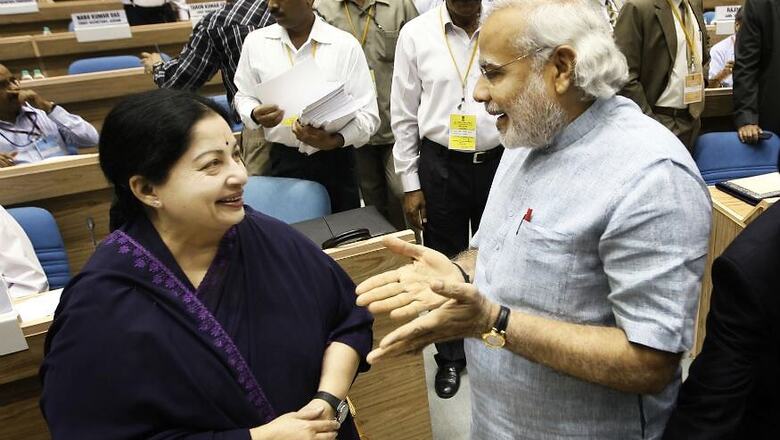
views
New Delhi: Both Gujarat and Tamil Nadu have led the country in embracing economic reforms and aggressively pushed pro-market policies. But results have been quite different for the two.
The southern state has performed better than Gujarat in lowering poverty, improving public health and literacy.

In the mid-1990s, rural poverty was greater in Tamil Nadu than in Gujarat. Figures cited in the paper say that in 1993-94 the proportion of poor people in rural Tamil Nadu was 51.2% while in Gujarat it was 43.3%. By 2011-12, Tamil Nadu reduced rural poverty by 34 percentage points to 15.8% while Gujarat only managed to bring it down 22 percentage points to 21.5%. Similarly, poverty reduction among social and religious groups has been greater in Tamil Nadu than in Gujarat.
However, Gujarat scores better than Tamil Nadu when it comes to inequality, with both rural and urban areas of the former registering lower levels of inequality than the latter.
When it comes to educating its population, Tamil Nadu again trumps Gujarat. In the two decades since 1993-94, its literacy rate increased from 67% to 81.1% while in Gujarat the corresponding figures were 64.6% to 77.9%. The rise in literacy levels among SC/STs was 23 percentage points in Tamil Nadu, compared to 15 in Gujarat.Read More: Three Deaths, Two Suicide Attempts in Coimbatore After Jayalalithaa's Death
In health indicators too Tamil Nadu is ahead of Gujarat. Infant mortality rate is 22 (per 1000 live births) in Tamil Nadu compared to 41 in Gujarat; the maternal mortality rate is 97 (Tamil Nadu) and 148 (Gujarat); child immunization is 80.9% (Tamil Nadu) and 45.2% (Gujarat); percentage of children who are undernourished in Tamil Nadu stands at 31.1 versus 51.7 in Gujarat.
Despite similar rates of growth, what explains the better socio-economic indicators of Tamil Nadu? Economists Jean Dreze and Amartya Sen pin it to the nature of state intervention in providing basic public services.
“Less well known, but no less significant, is the gradual emergence and consolidation of universalistic social policies in Tamil Nadu...Tamil Nadu, unlike most other states, also has an extensive network of lively and effective healthcare centres, where people from all social backgrounds can get reasonably good healthcare, free of cost,” they said in 2011.
Even the Public Distribution System in Tamil Nadu provides rice, sugar, kerosene, cooking oil, pulses and is universal in nature, compared to the targeted PDS in most other states including Gujarat.




















Comments
0 comment